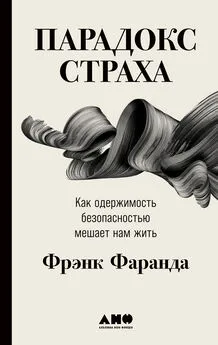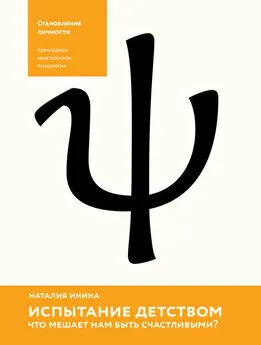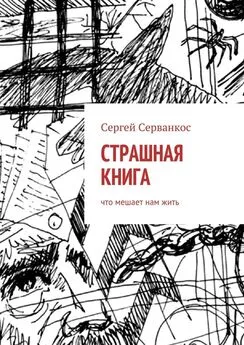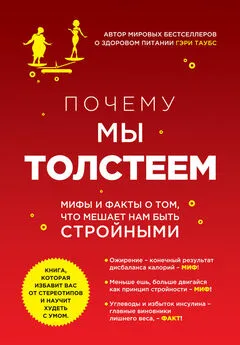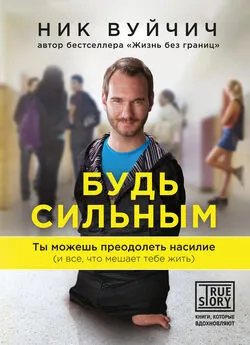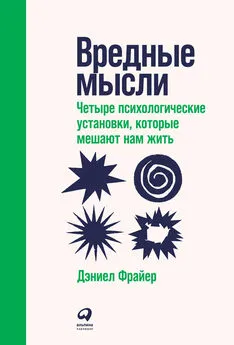Фрэнк Фаранда - Парадокс страха. Как одержимость безопасностью мешает нам жить
- Название:Парадокс страха. Как одержимость безопасностью мешает нам жить
- Автор:
- Жанр:
- Издательство:Литагент Альпина
- Год:2021
- Город:Москва
- ISBN:9785001394884
- Рейтинг:
- Избранное:Добавить в избранное
-
Отзывы:
-
Ваша оценка:
Фрэнк Фаранда - Парадокс страха. Как одержимость безопасностью мешает нам жить краткое содержание
О том, как посмотреть в лицо своим страхам, разобраться в природе их возникновения, защитить своего внутреннего ребенка, вглядеться в темноту и сквозь нее увидеть потенциальные возможности, рассказывает эта книга.
Парадокс страха. Как одержимость безопасностью мешает нам жить - читать онлайн бесплатно ознакомительный отрывок
Интервал:
Закладка:
Peters, E. (1989). Inquisition . Berkeley/Los Angeles, CA: California UP. (Original work published 1988).
Peters, E. (1996). Torture (expanded ed.). Philadelphia, PA: University of Pennsylvania Press. (Original work published 1985.)
Petrides, M. (2005). The rostral-caudal axis of cognitive control within the lateral frontal cortex. In Dehaene, S., Duhamel, J., Hauser, M., & Rizzolatti, G. (Eds.), From monkey brain to human brain: A Fyssen Foundation symposium (pp. 293–314). Cambridge, MA: The MIT Press.
Pierotti, R. J., & Fogg, B. R. (2017). The First Domestication: How Wolves and Humans Coevolved . New Haven and London: Yale University Press.
Pylyshyn, Z. (2003, March). Return of the mental image: are there really pictures in the brain? Trends in Cognitive Sciences, Vol. 7 No. 3, pp. 113–117.
Rattansi, P. (1988). Newton and the wisdom of the ancients. In Fauvel, J., Flood, R., Shortland, M. & Wilson, R. (Eds.), Let Newton be! (pp. 185–201). Oxford, England: Oxford University Press.
Ray, E. (2006). Foreword. In H. Alleg, The question (J. Calder, Trans.), (pp. vii – xii). Lincoln, NE: U of Nebraska Press. (Original work published 1958.)
Riby, D. M., & Hancock, P. J. (2008). Viewing it differently: Social scene perception in Williams syndrome and autism. Neuropsychologia, 46 (11), 2855–2860.
Rizzolatti, G., & Buccino, G. (2005). The mirror neuron system and its role in imitation and language. In Dehaene, S., Hauser, M. D., Duhamel, J. R., & Rizzolatti, G. (Eds.), From monkey brain to human brain: A Fyssen Foundation symposium (pp. 213–234). Cambridge, MASS: MIT Press.
Robin, C. (2004). Liberalism at Bay, conservatism at play: Fear in the contemporary imagination. Social research: An International Quarterly , 71 (4), 927–962.
Roux-Girard, G. (2009). Plunged alone into darkness: Evolution in the staging of fear in the alone in the dark series. In Perron, B. (Ed.), Horror video games: Essays on the fusion of fear and play (pp. 145–167). North Carolina: McFarland & Company, Inc.
Rushkoff, D. (2019) Team Human. New York, NY: Norton Sibrava, N. J., & Borkovec, T. D. (2006). The cognitive avoidance theory of worry. Worry and its psychological disorders: Theory, assessment and treatment, 239–256.
Sandseter, E. B. H. (2009). Children's expressions of exhilaration and fear in risky play. Contemporary Issues in Early Childhood , 10 (2), 92–106.
Sartre, J. (2006). Preface. In H. Alleg, The question (J. Calder, Trans.), (pp. xxvii – xliv). Lincoln, NE: U of Nebraska Press. (Original work published 1958).
Schaller, M. (2014, Oct). When and how disgust is and is not implicated in the behavioral immune system. Evolutionary Behavioral Sciences , 8 (4) pp. 251–256.
Schaller, M., & Park, J. H. (2011). The behavioral immune system (and why it matters). Current Directions in Psychological Science , 20 (2), 99–103.
Schaller, M., Park, J. H., & Mueller, A. (2003). Fear of the dark: Interactive effects of beliefs about danger and ambient darkness on ethnic stereotypes. Personality and Social Psychology Bulletin, 29 (5), 637–649.
Schiff, S. (2015). The Witches: Salem , 1692. UK: Hachette.
Schmidt, N. B., Richey, J. A., Zvolensky, M. J., & Maner, J. K. (2008). Exploring human freeze responses to a threat stressor. Journal of Behavior Therapy and Experimental Psychiatry, 39 (3), 292–304.
Scott, R. (2006). The aesthetic faculty. In Turner, M. (Ed.) The artful mind: Cognitive science and the riddle of human creativity (pp. 211–224). New York, NY: Oxford University Press.
Shapin, S. (2018). The scientific revolution. (2nd ed.) Chicago & London: University of Chicago Press. См.: Шейпин С. Научная революция // Деар П., Шейпин С. Научная революция как событие. – М.: Новое литературное обозрение, 2015.
Shipman, P. (2015). The invaders. How humans and their dogs drove Neanderthals to extinction . Cambridge, MA: Harvard University Press. См.: Шипман П. Захватчики: Люди и собаки против неандертальцев. – М.: Альпина нон-фикшн, 2019.
Shklar, J. (1989). The liberalism of fear. In Rosenblum, N. L. (Ed.), Liberalism and the moral life (pp. 21–38). Cambridge, MA: Harvard University Press.
Siviy, S. M. (1998). Neurobiological substrates of play behavior: glimpses into the structure and function of mammalian playfulness. In Beckoff, M. and Byers, J. (Eds.), Animal play: Evolutionary, comparative, and ecological perspectives (pp. 221–242). Cambridge, UK: Cambridge University Press.
Siviy, S. M. (2016). A brain motivated to play: insights into the neurobiology of playfulness. Behaviour, 153 (6–7), 819–844.
Siviy, S. M., & Harrison, K. A. (2008). Effects of neonatal handling on play behavior and fear towards a predator odor in juvenile rats (Rattus norvegicus) . Journal of Comparative Psychology, 122 (1), 1–8.
Slade, A. (2014). Imagining fear: Attachment, threat and psychic experience. Psychoanalytic Dialogues , 24:253–266: Taylor & Francis Group, LLC.
Solnit, R. (2016). Hope in the dark: Untold histories, wild possibilities. Chicago, Illinois: Haymarket Books.
Spitz, E. H. (1988). The artistic image and the inward gaze: toward a merging of perspectives. Psychoanalytic Revie w, 75 (1), 111–128.
Spitz, E. H. (1996). Between image and child: Further reflections on picture books. American Imago, 53 (2), 177–190.
Steen, F. (2006). The aesthetic faculty. In Turner, M. (Ed.) The artful mind: Cognitive science and the riddle of human creativity (pp. 57–72). New York, NY: Oxford University Press.
Stevens, J. R., & Hauser, M. D. (2005). Cooperative brains: Psychological constraints on the evolution of altruism. In Dehaene, S., Duhamel, J., Hauser, M., and Rizzolatti, G. (Eds.), From monkey brain to human brain: A Fyssen Foundation symposium (pp. 159–187). Cambridge, MA: The MIT Press.
Stiglitz, J. (2009). Progress, what progress? OECD Observer, 272 .
Strachey, J. (1959). Introduction. In Freud S., The standard edition of the complete psychological works of Sigmund Freud, Volume XX (1925–1926): An autobiographical study, inhibitions, symptoms and anxiety, the question of lay analysis and other works (pp. 75–176). London: The Hogarth Press.
Suddendorf, T. (2013). The Gap: The science of what separates us from other animals. New York, NY: Basic Books.
Suddendorf, T. (2013). Mental time travel: continuities and discontinuities. Trends in cognitive sciences , 17 (4), 151–152.
Suler, J. (1996). Mental imagery in the organization and transformation of the self. Psychoanalytic Review , 83 (5), 657–672.
Summers, F. (2000). The analyst's vision of the patient and therapeutic action. Psychoanalytic Psychology , 17 (3), 547–564.
Takahashi, L. K., Nakashima, B. R., Hong, H., & Watanabe, K. (2005). The smell of danger: a behavioral and neural analysis of predator odor-induced fear. Neuroscience & Biobehavioral Reviews , 29 (8), 1157–1167.
Tillich, P. (2000) . The courage to be (2nd ed.). New Haven & London: Yale University Press. (Original work published 1958.) См.: Тиллих П. Мужество быть. – М.: Модерн, 2014.
Torchia, N. J. (1988). Curiositas in the early philosophical writings of Saint Augustine. Augustinian Studies , 19, 111–119.
Tranel, D., Gullickson, G., Koch, M., & Adolphs, R. (2006). Altered experience of emotion following bilateral amygdala damage. Cognitive Neuropsychiatry, 11 (3), 219–232.
Turner, J. F. (2002). A brief history of illusion . The International Journal of Psychoanalysis , 83:1063–1082.
Turner, M. (2006). Prologue. In Turner, M. (Ed.) The artful mind: Cognitive science and the riddle of human creativit y (pp. xv – xvi). New York, NY: Oxford University Press.
Turner, M. (2006). The aesthetic faculty. In Turner, M. (Ed.) The artful mind: Cognitive science and the riddle of human creativit y (pp. 93–114). New York, NY: Oxford University Press.
Vaidyanathan, U., Hall, J. R., Patrick, C. J., & Bernat, E. M. (2011). Clarifying the role of defensive reactivity deficits in psychopathy and antisocial personality using startle reflex methodology . Journal of Abnormal Psychology , 120 (1), 253–258.
Volchan, E., Souza, G. G., Franklin, C. M., Norte, C. E., Rocha-Rego, V., Oliveira, J., David, I. A., Mendlowicz, M. V., Freire Coutinho, E. S., Fiszman, A., Berger, W., Marques-Portella, C., & Figueria, I. (2011). Is there tonic immobility in humans? Biological evidence from victims of traumatic stress. Biological Psychology 88 (1), 13–19.
Wardak, C., Ben Hamed, S., & Duhamel, J. R. (2005). Parietal mechanism of selective attention in monkeys and humans. In Dehaene, S., Duhamel, J., Hauser, M., and Rizzolatti, G. (Eds.), From monkey brain to human rain: A Fyssen Foundation symposium (pp. 273–291). Cambridge, MA: The MIT Press.
Watts, A. (2011). The wisdom of insecurity: A message for an age of anxiety (2nd ed.). New York, NY: Vintage Books. (Original work published 1951.)
Weinberg, E. (2006). Mentalization, affect regulation, and development of the self. Journal of the American Psychoanalytic Association, 54 (1), 251–269.
Wertheim, J. (2010). Lost in space: the spiritual crisis of Newtonian cosmology. In Bryson, B. (Ed.), Seeing further: The story of science, discovery, and the genius of the Royal Society. (pp. 59–81). New York, NY: William Morrow/HarperCollins.
Whalen, P. J., Rauch, S. L., Etcoff, N. L., McInerney, S. C., Lee, M. B., & Jenike, M. A. (1998). Masked presentations of emotional facial expressions modulate amygdala activity without explicit knowledge. The Journal of Neuroscience, 18 (1), 411–418.
Wilson, P. J. (1988). The domestication of the human species . New Haven and London: Yale University Press.
Wright, Kenneth (2009). Mirroring and attunement: Self-realization in psychoanalysis and art . London and New York: Routledge.
Zeki, S. (2006). The aesthetic faculty. In Turner, M. (Ed.) The artful mind: Cognitive science and the riddle of human creativity (pp. 243–270). New York, NY: Oxford University Press.
Zilles, K. (2005). Evolution of the human brain and comparative cyto-and receptor architecture. In Dehaene, S., Duhamel, J., Hauser, M., and Rizzolatti, G. (Eds.), From monkey brain to human brain: A Fyssen Foundation symposium (pp. 41–56). Cambridge, MA: The MIT Press.
Об авторе
Фрэнк Фаранда – профессор, нью-йоркский клинический психолог с 17-летним опытом частной практики. Его работа – помогать людям справиться со страхом и воображением. Он получил магистерскую степень в области психологии развития и образования в Тичерс-колледже Колумбийского университета, а докторскую, по клинической психологии, в Институте Дернера Университета Адельфи, удостоен постдокторских стипендий от программы для постдоков, специализирующихся в психотерапии и психоанализе, Нью-Йоркского университета и от Института реабилитационной медицины Раска. Фаранда также читает несколько курсов в Новой школе, в том числе «Развитие себя» и «Знакомство с трудами Юнга». За последние несколько лет он опубликовал ряд научных статей об уме, метафоре и воображении в рамках подготовки материалов для этой книги и выступил приглашенным редактором двух тематических выпусков журнала Psychoanalytic Inquiry .
Читать дальшеИнтервал:
Закладка:
